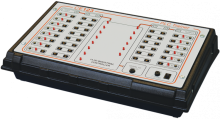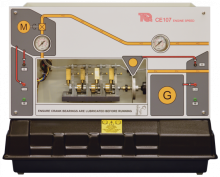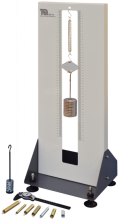PLC Trainer

Uses an industry standard PLC to control the PLC Process using ladder logic programming running on a PC. For use with the PLC Process (CE111).
TecQuipment’s PLC Process gives students and engineers practical experience of the principles and application of programmable logic controllers (PLCs). The object is to connect and program an external, programmable logic controller to monitor and control the level and flow rate of water in a two-tank system.
The apparatus has two transparent tanks, mounted one above the other. A variable-speed pump transfers water from the reservoir (in the base of the unit) into the upper tank. The water can drain down to the lower tank and then back into the reservoir. Solenoid valves may be individually opened or closed to control and redirect the movement of the water. The pump control is on or off, but a manual control allows the user to set the speed. A float switch in the reservoir monitors the level of water. Each tank includes two-level sensors which measure maximum and minimum water levels. An in-line flow sensor provides a pulsed output. Its frequency is proportional to the flow rate and the number of pulses proportional to volume.
Indicators next to each input and output socket show the on/off status of the pump, the valves, the maximum and minimum level in each tank, and the flow rate.
An overflow in each tank prevents accidental overfilling.
When used with the CE123:

Uses an industry standard PLC to control the PLC Process using ladder logic programming running on a PC. For use with the PLC Process (CE111).

A compact self-contained bench mounting apparatus designed to allow students at all academic levels to investigate basic and advanced principles of control including control of non-linear systems and inner-loop feedback techniques.

Tests extension springs to find their properties. Proves Hooke's law and the basic rules of spring design.
